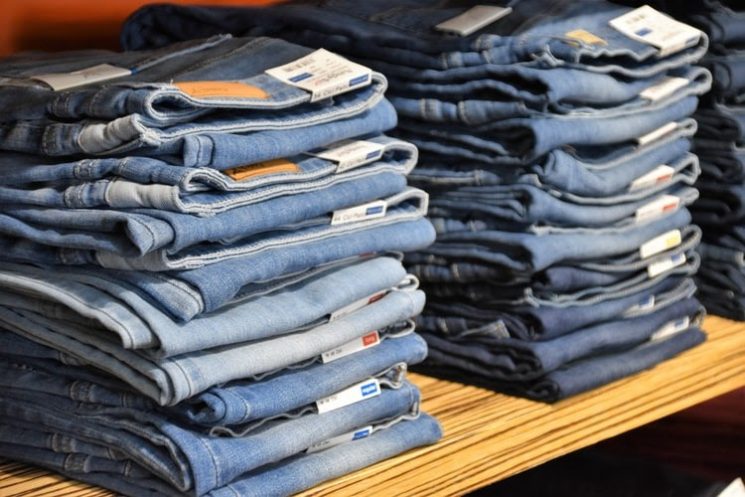Numerous fashion business owners and clothing entrepreneurs often complain about a lack of sales and increasing their fashion businesses’ revenue. Some of them blame the economy, other the ongoing Covid-19 pandemic, the big and famous fashion brands that have enormous marketing budgets available, and pretty much everything under the sun. Their respective brands and fashion businesses struggle, and often close because of little to no sales. Yet, the reality is somewhat different. As never before, we have so many opportunities to sell our products. If you believe this and are still not selling – the harsh truth may be that you are only not doing enough to bring the sales home and increase the revenue of your fashion business.
The act of selling, in reality, is a numbers game, and there is no magic formula. Growing your fashion business means obtaining more customers, increasing sales, and boosting your company’s revenue while synchronously expanding your business’s reach by hiring more staff, improving and managing inventory, and opening more sales locations. In any case, growing a small fashion business doesn’t happen automatically. It’s tough, and you will need to work twice as much as your fierce competitors to develop your business and gain a competitive edge. Whether you are an upscale designer who sells your design lines, or a re-seller of branded clothing, increasing your sales and the revenue of your fashion business is an extremely challenging task. In the following paragraphs, we will share some of the best ways to expand your clothing business and increase your company’s revenue.
Improve Your Inventory Management
As there are numerous ways to bolster your business’ sales, inventory management is arguably the most important for every product-based business. If your products aren’t moving, then you are not making any money – as simple as that. An outstanding inventory management system will complement your sales team’s ability to sell, boost your clients’ loyalty, and play a vital role in the multichannel strategy. Once you have complete control over the inventory of your fashion store, your sales team will make use of real-time data on stock levels and pricing to seal a sale. The customers will always know what’s in stock and get their orders delivered faster. You will be able to manage inventory across multiple sales channels so that the stock will always be allocated efficiently. Referring to this ApparelMagic guide: Improving Inventory Management, this latest technology software for the fashion industry tracks clothing, shoes, accessories, and related items as they move between locations. As these steps were once manually tracked by hand in paper spreadsheets and logs, real-time inventory automation dramatically improves accuracy and saves a lot of time. The software lets fashion business owners respond quickly to fashion trends and other various changes in market demands and conditions.

Expand Your Fashion Business Online
Most fashion businesses that launch in today’s tech-savvy era come with their transactional online stores. Still, developing the website and the store is the more accessible part of the equation. Many business owners are somewhat shocked to discover that website traffic and potential customers won’t come knocking on your door just because you’ve successfully created your fashion business’ online shop. To make your website work, generate sales, and help you increase the revenue of your fashion business, you will certainly need to invest a lot of time and resources in continuous marketing and other online activities.
In addition to your official website, consider joining online marketplaces and platforms that sell and represent multiple fashion brands under one umbrella. Developing an online fashion store on an established e-commerce platform can significantly improve your business’ exposure and client reach. An additional bonus of expanding your fashion business online is getting access to a plethora of online marketing tools and channels. Social media platforms represent an excellent tool for the task of marketing your business, which is why you see all of the famous multinational brands investing heavily in their social media presence via different marketing campaigns.
Reevaluate Your Suppliers And Pricing
Every successful retailer is well aware that clothing manufacturers sit at the top of the clothing chain, but that doesn’t mean you should stick with a particular supplier when your business needs a change of scenery. Reevaluate your choice of producers or suppliers, mainly when industry changes occur now and then. Always analyze data from previous sales cycles, stay on top of the trends, and be well informed before you sign the next contract with your product supplier. Understand how to haggle and negotiate to get the best deals for your business, but always maintain a good relationship with former and existing suppliers, so you can tap into them when the right opportunity arises.

Pay a great deal of attention to supplier pricing and stay aware of your existing customer base’s expected pricing. Experienced fashion entrepreneurs can take advantage and increase the revenue of their fashion business of sensed pricing by placing a premium on periodical items like prom dresses, winter wear, or swimsuits. Discounts are another powerful strategy to move seasonal products faster and freshen up your stock. Still, be careful when applying discounts as it’s not always a surefire strategy in every situation as they can severely cut into your profits when mishandled.
Stop Treating Your Business Like A Hobby
If you are in it to make some money and have a profitable operation, stop treating your business like a hobby. It’s just not possible for you to have a 4-hour workweek and magically run a successful business. If you are genuinely interested in increasing your business revenue and making a success story out of your fashion business, you should be clocking 60+ hours. For each dollar that you spend and every hour of work that you dedicate to your business, you need to outline the return of investments that you are getting. Even though these ROIs won’t always have financial implications, they might have brand awareness implications. That will undoubtedly help you in getting sales, increasing your company’s revenue.

Final Words
We hope that our short guide was helpful. See how our four profound strategies apply to your business model and try them for yourself. Since there’s no winning formula applicable to all fashion businesses, you will have to find the one that works perfectly for your situation. In any case, know that if you want to run a successful fashion business, you should never stop the hustle.





